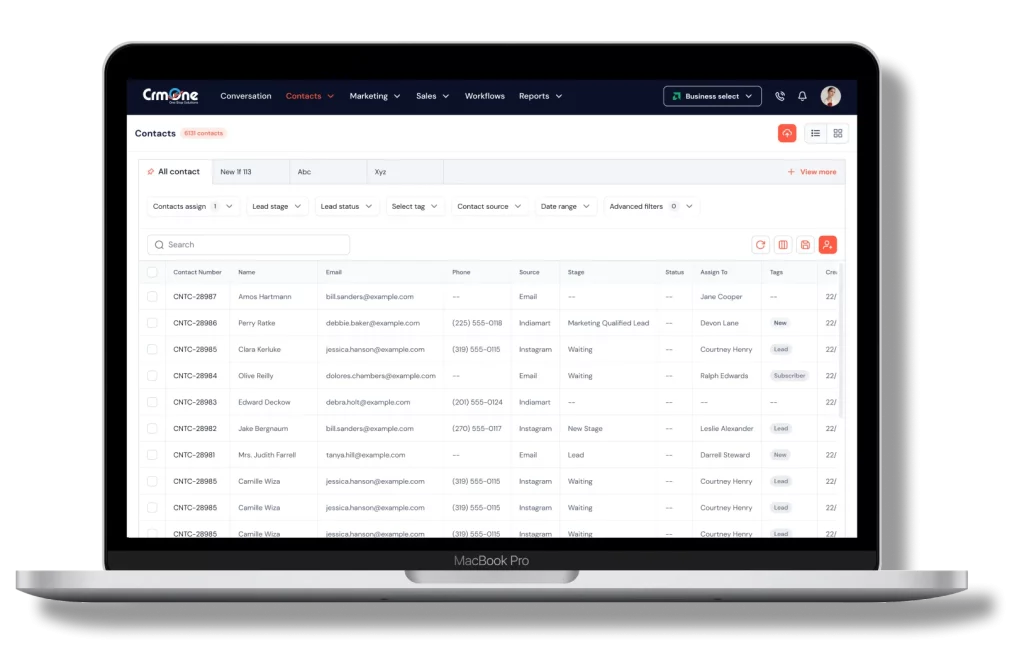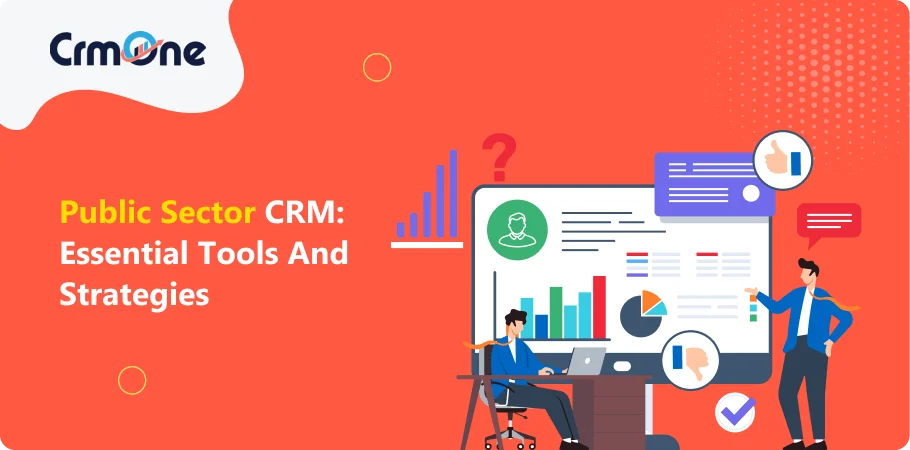Managing relationships is just as important for public sector as it is for private sector. But government agencies and non-profits have their own challenges that need special solutions. That’s where a Public Sector CRM can be a lifesaver.
In today’s fast pace world public sector organisations need to manage relationships as efficiently as private companies. Government CRM for public sector is designed to help government contractors and non-profits streamline their operations, deliver better services and engage citizens. With focus on managing sensitive citizen data and transparency a well implemented CRM can overcome the unique challenges faced by public sector organisations. By having a CRM for public sector and these organisations can be more efficient, protect data and serve the public better.
Key Considerations for Choosing a Public Sector CRM

1. Compliance and Regulations
When selecting government CRM systems, it’s crucial to ensure that it complies with relevant data privacy and security standards. Public sector organizations handle large amounts of sensitive citizen data, so the CRM system must meet strict regulations to protect this information. Whether it’s a local government or a national entity, compliance is non-negotiable for maintaining trust and security.
2. Scalability
As government agencies grow and handle more and store data, they need a government crm software that can scale with their needs. A scalable CRM for public sector ensures that the system can support an increasing number of users and manage the expanding volume of citizen requests and service delivery requirements. This flexibility is essential for efficient government operations.
3. Integration Capabilities
A robust government CRM system must integrate seamlessly with existing government services and platforms. From document to contact management to service request history, the ability to connect the CRM software with current government organizations’ infrastructure is key to ensuring smooth workflows and effective data storage.
4. Accessibility and User-Friendliness
In the public sector, it’s important that the CRM for government is accessible to a diverse range of users, including those with disabilities. User-friendly interfaces and accessibility features make it easier for government organizations to serve citizens efficiently. Ensuring ease of use across the board leads to more successful CRM implementation, benefiting everyone involved.
5. Cost-Effectiveness
A critical factor when choosing the best CRM software for the public sector is cost. Beyond just licensing fees, agencies should consider the total cost of ownership, including implementation and ongoing maintenance. A cost-effective CRM solution will deliver long-term cost savings while still meeting the demands of government operations. Keeping track of these expenses ensures resources are used efficiently.
By considering these factors, government agencies can select the right customer relationship management software that meets their needs for compliance, scalability, integration, and cost-effectiveness, ensuring they are well-equipped to manage citizen engagement and enhance service delivery.
Essential Features for Public Sector CRMs

Citizen Relationship Management
A CRM for Public Sector Platform must provide tools to manage citizen communication effectively. These CRM tools allow government agencies to track interactions, understand citizen needs, and respond to requests efficiently. Managing interactions with individual citizens helps build trust and improve overall citizen satisfaction.
Case Management
Handling citizen inquiries, complaints, and requests can be streamlined through case management features. These tools help automate and track the progress of each case, ensuring timely responses and efficient resolution. By using a centralized platform for managing requests, government organizations can significantly enhance operational efficiency and improve public services.
Knowledge Base
A central repository of information helps both staff and citizens access important data easily. Whether it’s guides, FAQs, or historical data, a well-organized knowledge base ensures that users can find answers without manual assistance, helping to automate routine tasks and reduce the burden of administrative tasks.
Reporting and Analytics
With built-in data analysis tools, public sector CRM for government can generate reports and provide insights into performance and trends. These features allow government agencies to make data-driven decisions, monitor service quality, and identify areas for improvement. By analyzing data, organizations can enhance the procurement processes and improve their service offerings.
Collaboration Tools
A unified platform that fosters teamwork is essential for multiple departments to work together. Collaboration tools within a cloud-based solution help improve communication across the entire organization. By automating routine processes and ensuring all data is stored securely on the government cloud, public sector teams can work together more effectively, improving overall service efficiency.
By integrating these key features, government agencies can streamline citizen communications, enhance efficiency, and ensure that public services are delivered effectively. These CRM for Public Sector play a crucial role in ensuring data security and supporting compliance with strict regulations.
Boost Your Business Performance with CrmOne
Our experts will guide you through the most effective ways to use CrmOne, ensuring you fully leverage its features for maximum impact on your business.

Best Practices for Implementing a Public Sector CRM

Do a Thorough Needs Assessment
Before you select a government CRM, you need to understand your government agency’s unique needs. This means evaluating the specific tasks, citizen needs and operational challenges you want to solve. A thorough assessment will ensure the CRM platform aligns with your goals and integrates with existing legacy systems and public services.
Involve All Stakeholders
Engaging multiple departments and leadership is key to a successful CRM implementation. Key stakeholders will provide valuable insights into the organization’s needs and will ensure the CRM chosen fits the whole team. Their involvement during the selection and implementation process will also drive better adoption and less resistance to change.
Provide Ongoing Training
A user friendly interface is important but proper training is key to getting the most out of the system. Providing detailed training sessions for staff will ensure they know how to use the CRM tools to manage citizen communications, automate routine tasks and improve overall efficiency. Continuous education will keep the team up to date with new features and updates.
Monitor and Measure
After implementation it’s important to monitor the CRM. Regularly measuring the system will help track key metrics like citizen satisfaction, data accuracy and operational improvements. This ongoing analysis will allow for timely adjustments so the CRM continues to meet the organization’s changing needs and deliver value in public services.
By following these best practices, government agencies can ensure a smooth and successful CRM implementation, resulting in better citizen engagement and improved service delivery.
How CrmOne Can Benefit Public Sector Organizations

1. Simplified Citizen Engagement
CrmOne’s government CRM software brings government agencies and citizens together by centralising all citizen interactions. This crm for public sector organisations allows agencies to track every service request and communication so nothing falls through the cracks. By having a complete service request history the CRM ensures timely responses to citizen needs and increases overall citizen satisfaction.
2. Simplified Case Management
CrmOne simplifies case management for government agencies by automating manual processes and streamlining workflows. The platform tracks every case from start to finish, so response times are faster. This government crm solution reduces administrative burden, increases productivity and allows staff to focus on higher priority citizen requests. So services are better for agencies and the public.
3. Knowledge Management
CrmOne has a central repository for all important information so staff can access resources and documents easily. This crm solution reduces response times by automating routine tasks like document management, improving internal communication and ensuring teams are aligned. By managing and storing data efficiently CrmOne eliminates confusion and helps organisations deal with enquiries better.
4. Data Driven Decision Making
CrmOne provides data driven insights through its analytics tools so government agencies can make informed decisions based on real time data. By analysing performance metrics and trends agencies can identify areas for improvement and allocate resources better. Being able to analyse data helps improve overall service delivery and ensures public services are tailored to the community’s needs.
5. Collaboration
CrmOne brings together multiple departments by providing tools to improve internal communication and project management. This crm system smooths out workflows so different teams can work together on citizen requests. By having a single platform for information sharing and task coordination CrmOne improves overall organisational efficiency.
6. Compliance and Security

Data security is top of mind for public sector organisations when dealing with citizen data. CrmOne is built with strict compliance to relevant data security regulations so government crm systems protect sensitive data. This CRM for public sector meets government standards for data storage and access so minimises the risk of data breaches and maintains public trust.
7. Scalability
CrmOne is designed to be scalable for local government agencies and larger entities. As organisations grow CrmOne can handle more data and users so the crm system adapts to changing needs. This flexibility makes it the perfect government crm solution for agencies looking to future proof their CRM for public sector and systems and maintain business continuity.
8. Integration
CrmOne integrates with other government systems so there are no data silos and improved workflow. This integration streamlines procurement and consolidates information across multiple platforms. By reducing duplicate data entry CrmOne improves overall efficiency for government services.
9. Usability
CrmOne is accessible to all users including those with disabilities by having a user friendly interface that meets accessibility standards. This makes the crm platform more adoptable across the organisation so all staff can manage citizen communications. By being accessible to a wide range of users CrmOne improves public services to the community.
Conclusion
Implementing a CRM for public sector like CrmOne can significantly enhance the efficiency and effectiveness of public sector organizations with use of government crm. From streamlining citizen interactions and improving case management to ensuring data security and facilitating data-driven decision-making, CrmOne offers tailored solutions that meet the unique needs of government agencies.
Its ability to scale, integrate seamlessly with existing systems, and offer cost-effective services makes it an ideal choice for improving public service delivery. By adopting CrmOne, government organizations can not only enhance citizen satisfaction but also create a more transparent, efficient, and responsive system that better serves their communities.
Get started for Free
Start for free today. Boost your sales by clicking the Get Started button. With CrmOne, you can manage leads, sales, and customer service all in one place.
